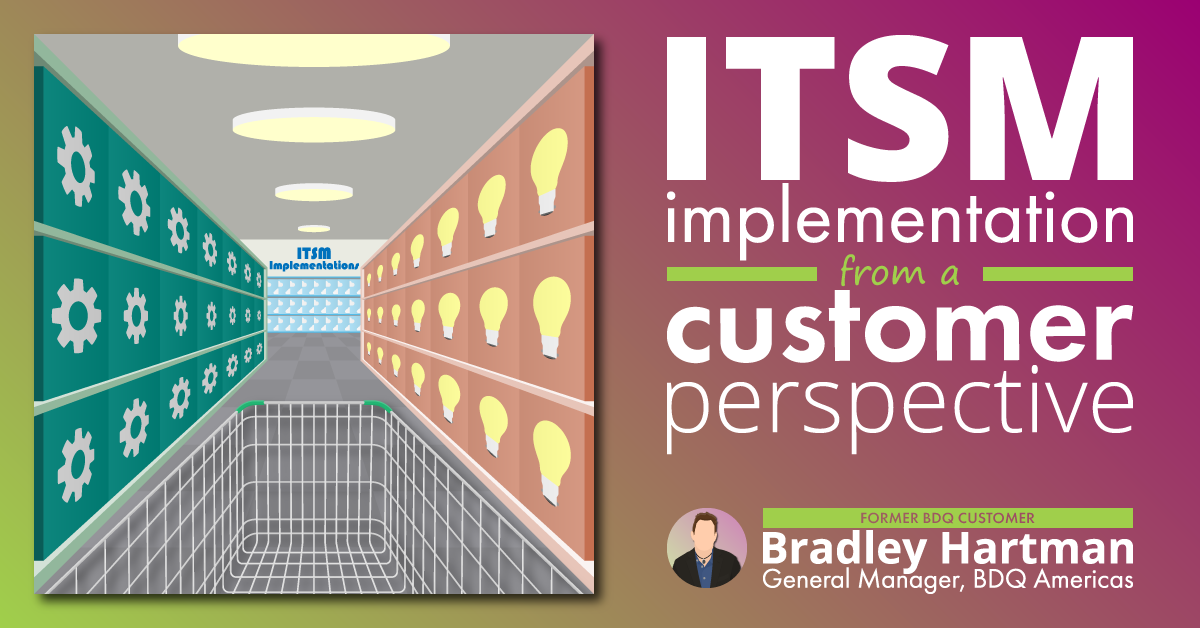
ITSM has changed over the last 3 decades - just a bit about me. My name is Brad Hartman. My ITSM Journey started in 1995, although I didn’t know it.
 Back then, at the State University College at Oneonta, the service desk software system was a small Microsoft access database that no one used, and 4 to 5 Computer centers, which I was a member of the staff, we just kept the students on the rails. The Internet of Things didn’t exist, the World Wide Web was this mystery, and the world was not entirely a slave to their mobile devices. It taught me that ITSM is as simple as supporting our users and listening. That has not changed in the 30 years, but the complexity and need for a solid process framework.
Back then, at the State University College at Oneonta, the service desk software system was a small Microsoft access database that no one used, and 4 to 5 Computer centers, which I was a member of the staff, we just kept the students on the rails. The Internet of Things didn’t exist, the World Wide Web was this mystery, and the world was not entirely a slave to their mobile devices. It taught me that ITSM is as simple as supporting our users and listening. That has not changed in the 30 years, but the complexity and need for a solid process framework.
Why has this changed? It is the backbone of the world. We still must have the same values but must understand that we are in a more hybrid and fluid world. This makes the processes and systems you use essential to keep a high quality of service. This brings me to key points of today's ITSM world:
- Understanding your tools This is one I learned through using two of the significant ITSM systems, Service Now and Jira Service Management. Most people, including myself, until I started learning this as a consultant, don’t know the power and what the tools can provide to them. They were educated, and the systems were implemented correctly. I used maybe 30-40 percent of the feature set at my past two companies.
- Does your ITSM or Applications team have the time to manage this, or with these SAAS Tools, should you be bringing in a partner to help you get the most out of your investment?
Everyone spends so much time looking at the tool to use for the ITSM. In many cases, since they are not educated, they don’t know they are part of this journey.
- What is the maturity of your organization? In the last 15 years, I was a Team Lead or Manager of 2 Global Service desks. One was using Service Now, and the other was Jira Service Management. Both are industry leaders in the ITSM space.
- Tools have all the power in the world, but I have learned through both experiences it is a mix of adoption by the IT and end-user teams that will be the measure of success.
- There is value in bringing in an outside expert. In both of my experiences in the past 15 years with companies in midsize space, there was a mix of being too close to the process and not having the understanding and roadmap for what we can achieve at each maturity level. This map would have given us tick boxes and metrics to aim for instead of just guessing at it and never meeting the goals management expected from their investment.
Does your ITSM/Applications team have the time, and is it cost-effective to keep the management of the SAAS Platform in-house? My thoughts:
- In my experience, this one is always a struggle in the small and midsize spaces I have experienced. An example of this is that, in many cases, you will have only one resource that knows of and is dedicated to being the Subject matter expert of this platform. In some cases, they won’t even have that one person they will be managing multiple applications.
- These SAAS and Application Management resources are not low-cost and require ongoing training. If you bring in a Boutique managed service, would it be higher quality and more cost-effective than that shared resource that is doing it now?
- Your existing resources do not have to be let go, but they can now be freed up to work other workloads that are not getting the complete focus. They also have the in-house knowledge necessary to bring the proper information to the managed service.
- There is a misconception about managed services that you, as the client, can be hands-off. Any successful managed service is more of an extension of your existing ITSM/Applications team. It will decrease the overhead substantially, but you will still get better outcomes from providing high-quality input in this partnership.
I have told you my story and thoughts on ITSM. Now, a bit about what BDQ can bring to you. Before joining BDQ as the General Manager in the United States, I was a client for nearly five years. Here is what we can get to you as our client:
- Hands-on Advisory and Consulting Services on how to build your ITSM/ITIL Solution and look at where you are on the journey to success.
- A Road Map of your maturity that you can work on as a business to be able to show to your management that you’re moving toward the right direction of maturity in your organization.
- Looking at how you’re doing your work management in the ITIL/ITSM Space, we may be an Atlassian Partner, but if you’re in another tool, we want to be part of your journey to success.
- We can take you on the journey of getting the ITIL Certification of Processes
- We are a Boutique firm, and Every Member of the Organization is taught in the BDQ culture how to bring the best quality of product and to be honest to our clients. That is this part of the special sauce that differentiates us from the competition.
BDQ are Atlassian and Asana Solution partners and are staffed primarily by Technologists or Management Consultants. BDQ provides high-quality remote-first painless, professional solutions to Enterprises, Public Sector and mid-market customers in the UK, US and EU.
If you have any ITSM, Atlassian or Asana requirements, questions or comments, please get in touch. Let's talk about what you need.
Related Posts
BDQ increases Cloud cover with New York office
BDQ expands its global presence with the opening of a New York office and welcomes Bradley Hartman...
BDQ Awarded Framework Contract for G-Cloud 13 | BDQ
BDQ are pleased to announce that we have been awarded a framework contract for G-Cloud 13. This is...
The Role of Automation and AI In IT Service Management
As businesses increasingly turn to Artificial Intelligence (AI) and automation to enhance their IT...










